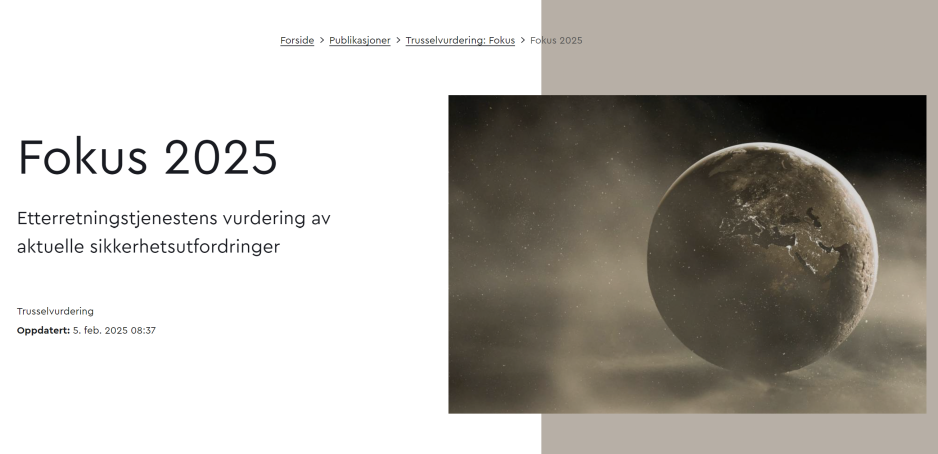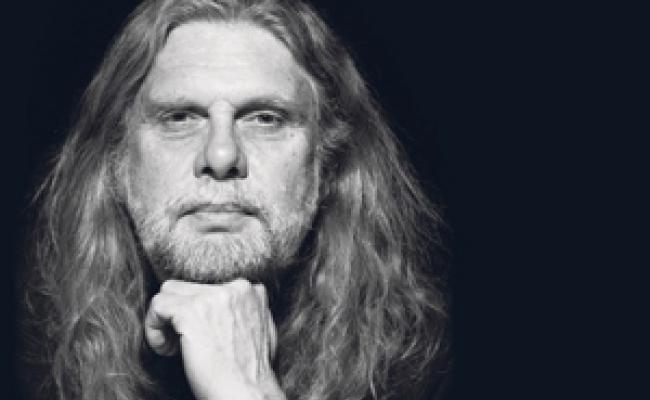The Political Game Continues Even as the Distinction Between War and Peace Is Blurred

The distinction between war and peace has been blurred, according to the Norwegian intelligence service's latest threat assessments. (Screenshot of the Norwegian Intelligence Service's newest report).
Comment: They were supposed to utilize the whole country and create viable communities on the border with Russia. A powerful industry investment would replace measly measures in the so-called action zone. Well, that did not go according to plan. Even after the Norwegian government collapsed, the reversal of adopted policies continues.
This is a comment written by a member of the editorial staff. The comment expresses the author's opinions.
This time, the former ruling party is putting its own policies at stake.
First, the government coalition between the Norwegian Labor Party and the Centre Party collapsed. At the same time, Donald Trump (R) prepared for a trade war and threatened to cut the support for Ukraine's ability to defend itself against Russia.
Put in play
Then, the Finnmark power supply is put into play.
The other day, the Norwegian Intelligence Service (NIS), the Norwegian Police Security Service (PST), and the Norwegian National Security Authority (NSM) presented their threat assessment for 2025. It is a partly terrifying read, quite precisely summarized by Nils Andreas Stensønes, head of the Intelligence Service:
"The divide between war and peace has been blurred out," says Stensønes to VG.
Looked us deep in the eyes.
I have many times asked where peace ends and war begins. Now we know how our intelligence services answer that question. And we in the North are particularly at risk of Russia's aggressive acts.
The reports include how civilian Russian vessels are used as a platform for intelligence activity. To illustrate: The same day the intelligence reports were presented, at least ten Russian trawlers had sought shelter from the storm in Troms, according to the newspaper Nordlys.
The fjords further north were also eventually filled by Russian ships.
However, intelligence is not the only challenge in the North. According to the intelligence services, the risk of sabotage against infrastructure, such as water and energy supplies and health preparedness, is also high on the list of events we must prepare for.
A year and a half ago, on August 8th, 2023, Norwegian PM Jonas Gahr Støre (Labor) stood in Hammerfest with then-MoF Trygve Slagsvold Vedum (Centre). They had launched what they called a power and industrial boost in Finnmark.
Wasn't that important after all.
The harmonious duo pointed to the lack of capacity in the power grid and vulnerability as the biggest obstacle to growth and development in Finnmark.
Controversial initiative
Such a power and industrial boost was crucial for a "strong, civilian presence in the North." According to the government, this was about "building the country for the future."
By a wide margin, it was a powerful, albeit controversial, investment in the High North.
Although I opposed electrification, I accepted the solution precisely because it was part of a crucial industrial boost for the power system in Finnmark. Statnett has emphasized the need to improve the security of supply in Finnmark since 2005.
Then, little or nothing happened. The entire East Finnmark region was blacked out as recently as June last year due to a system failure in a heavily loaded grid. Businesses are almost without exception denied their applications for grid connection and establishment of new industries.
Also read (the article continues below)
In other words, the rationale for Finnmark's power and industry boost was essentially an answer to the increasingly frequent threat assessments from the PST and the NIS: a solid national infrastructure for both the business sector and a viable population.
Trygve Slagsvold Vedum looked us deep in the eyes from an improvised outdoor stage in Hammerfest while making these points.
But then it turned out not to be that important after all. A couple of days after the Centre Party left the government offices, the situation changed to the contrary.
Now, the answer to the threat assessment is to stop the electrification of Melkøya and perhaps also the power and industrial boost.
Gamified
No one knows what such a turnaround will mean. Building power and power lines are discussed as if it's as easy as turning a light switch on and off. That is not the case. It is an arduous and lengthy process unsuitable for the political game currently taking place in the Norwegian Parliament.
A strange experience to follow Norwegian politics from the North.
The Centre Party has gamified the reversal of political decisions while in government.
The party continues down the same path even after leaving the government. This time, they aren't burying others' investment areas but their own. None of this has been assessed, neither economically nor legally. No one knows what the consequences will be.
It is quite a strange experience to follow Norwegian politics from the North right now.
Seriously though. This takes place at the same time that the PST and the Norwegian Intelligence Service are presenting their gravest concerns for the High North if the communities in the North are not enabled to resist the attacks from Russia.
Attacks where the distinction between war and peace has already been blurred.




